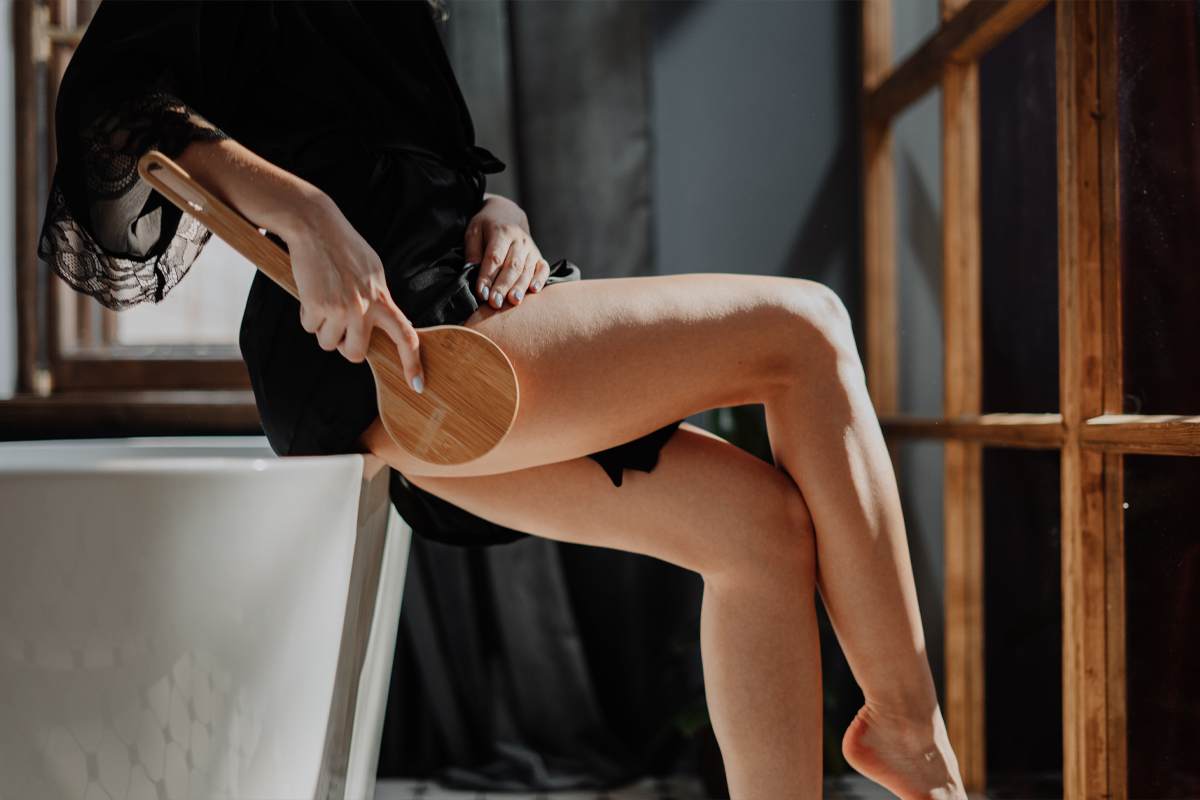
Cellulite? More Like #celluLIT
Believe it or not, cellulite is normal: it affects 85% of women.
Cellulite is one of the many things we’ve been conditioned to believe is ugly and unhealthy. Beauty standards have come and gone throughout the years but cellulite remains something most women are self-conscious of. But contrary to popular belief, cellulite isn’t a medical condition, it’s a cosmetic condition and it’s very, very normal.
Cellulite affects around 85% of post-adolescent women. It appears as dimpled tissue under your skin usually in the hips, thigh and buttock area (Draeols and Marenus 2013). Although cellulite can also affect men it’s pretty rare because our bodies are made differently.
Essentially, fat cells lay underneath the epidermis and dermis (top layers of your skin), which store excess energy. Small bands of connective tissue run between these fat cells and connect the top layers of skin to the tissue deeper in your body. These bands create chambers where fat cells live. But sometimes, fat cells expand and the chambers get crowded and begin to bulge, which creates little bumps and ripples on the top of the skin. Cellulite isn’t fat.
There are many factors that are believed to cause cellulite including our hormones, ageing and genetics. Beauty standards have told us for years that cellulite was our fault for not exercising enough or taking care of ourselves, but actually it’s just our natural body.
There are further misconceptions that only overweight women have cellulite but that’s a myth too. Even professional athletes, yogi’s and yes, even models have cellulite. Although exercising and eating well is obviously great for your overall health and may well minimise your likelihood of having cellulite, it absolutely doesn’t mean that you'll be exempt. It’s important to emphasise that each body is different and many factors play a role in your body’s health and appearance, so comparison is a waste of time.
Chessie King is one of the Instagram influencers on a mission to demolish beauty standards. Her infectious energy is refreshing: she frequently shares unflattering and real images of herself to encourage women to celebrate their flaws.
Alex Light is another body confidence and anti-diet influencer with a history of eating disorders. Her whole feed is dedicated to helping women feel good about their bodies. She told her 290k followers that cellulite “is simply deposits of normal fat cells in the connective tissue of the skin. It produces no symptoms and is not a sign of disease. It is simply visual” and goes on to say, “your body deserves sunshine so get that bikini or those shorts on in the knowledge that you are good enough as you are”.
For years we’ve been bombarded with tips and tricks to rid our cellulite but why? If it’s natural and holds no implication to our health, what is the need? Unfortunately we live in a world that enjoys creating insecurities so that the diet industry can profit from our desperate need to rid the so-called flaws. Although we encourage pursing a healthy lifestyle, cellulite is no reflection of your health and you don’t need to ‘fix’ it. The only thing that needs fixing is your attitude towards your body.
Like Chessie and Alex encourage, we recommend treating your body with kindness and gratitude. Your body is more than an ornament to be designed, moulded and polished. Rather than focusing on your ‘flaws’ (is there such a thing as flaws if beauty is subjective and ultimately, boring?) And what your body looks like, focus your attention on what your body does for you. For example, your body keeps you alive and breathing, it allows you to run through nature and swim in the sea, it allows you to laugh over a home cooked meal and so much more.
However, we know that this attitude takes a lot of time and practice. If your cellulite is affecting your confidence and self-esteem, there are a few minimal options you could try whilst you’re working on your mindset.
Topicals
There is no way to completely get rid of cellulite but using creams with collagen stimulating ingredients like retinol and caffeine in may temporarily minimise it because they thicken the skin and dehydrate the fat cells. Most creams say they help with the “appearance of cellulite” which is important to note, because they cannot rid cellulite altogether.
Massages
Completely free, this option can improve lymphatic drainage and stretch skin tissue. However consistency is key so you have to massage your skin daily to see any small effect.
Dry brushing
This is essentially where you gently exfoliate your skin using a coarse brush. This movement is supposed to increase blood flow and reduce inflammation which in turn reduces cellulite.
Contrast showers
Just like taking an ice bath after a sauna session, switching your shower temperature between hot and cold can increase circulation to your skin tissue.
There are more invasive treatments like radio frequency, muscle sculpting and injections to reduce cellulite. Coming in 2021 is QWO, the first and only FDA-approved prescription medicine for cellulite. It is an injection made up of a combination of bacterial collagenases and involves 3 treatments every 21 days. However, it has potential serious side effects of allergic reactions and bruising.
But remember, all options to ‘cure’ cellulite are temporary and involve a lot of maintenance! Do you really have the time and money? A kind mindset is free.
Up next, Skin-Positive Influencers Are Embracing Their Acne One Selfie At A Time











